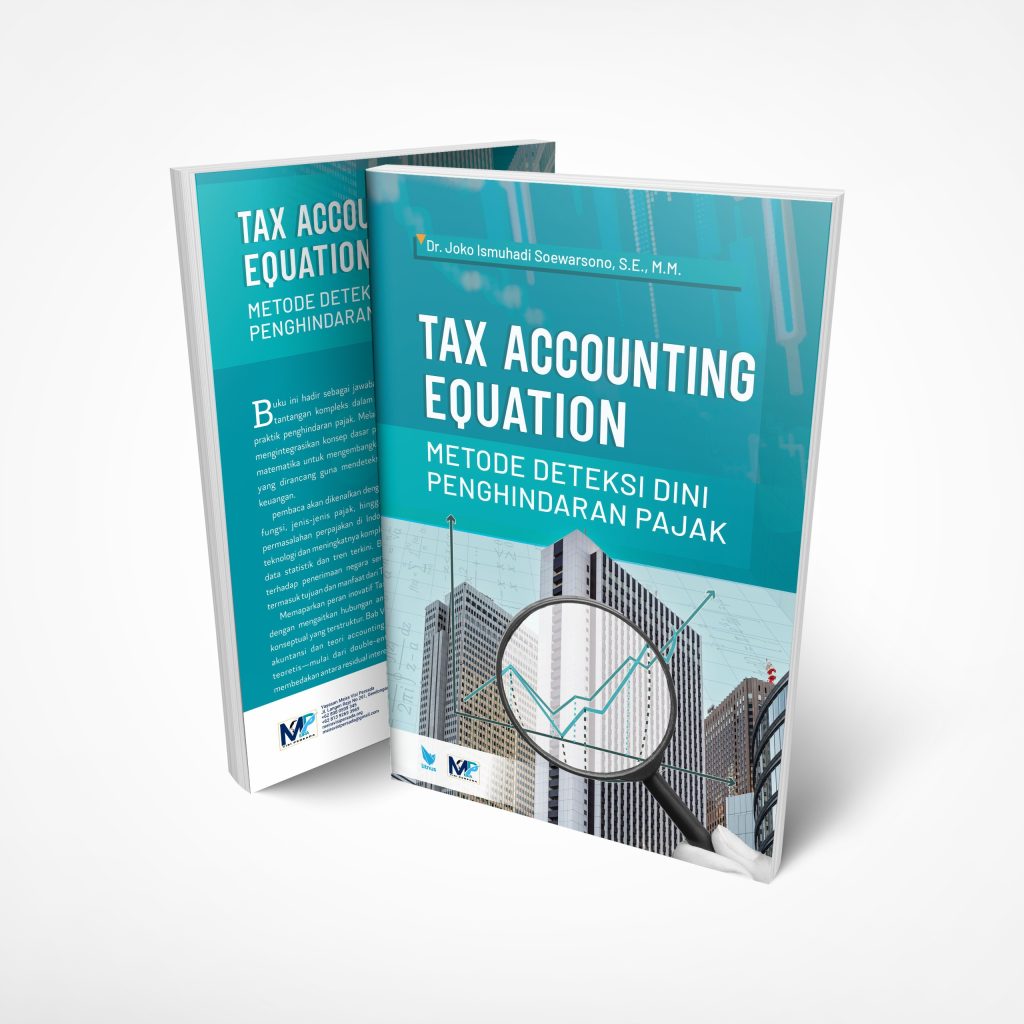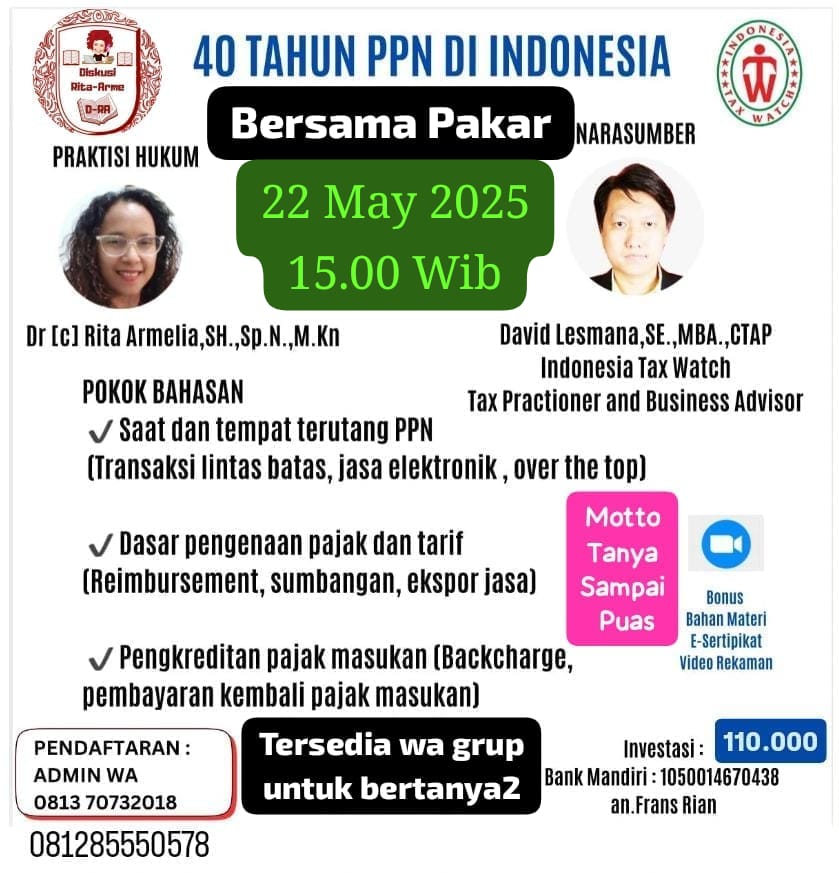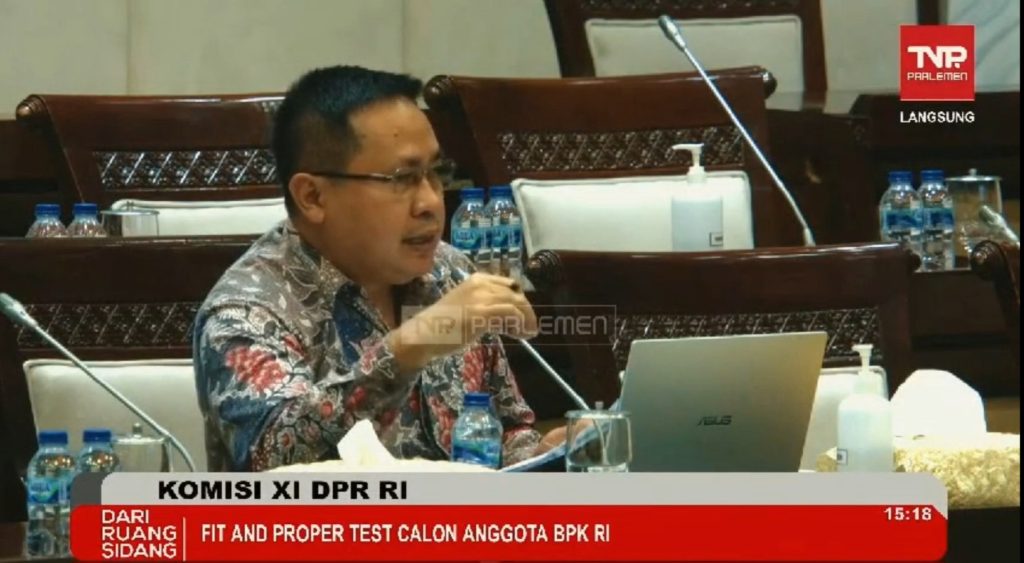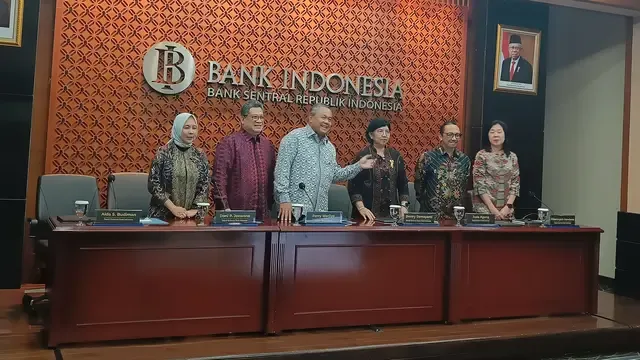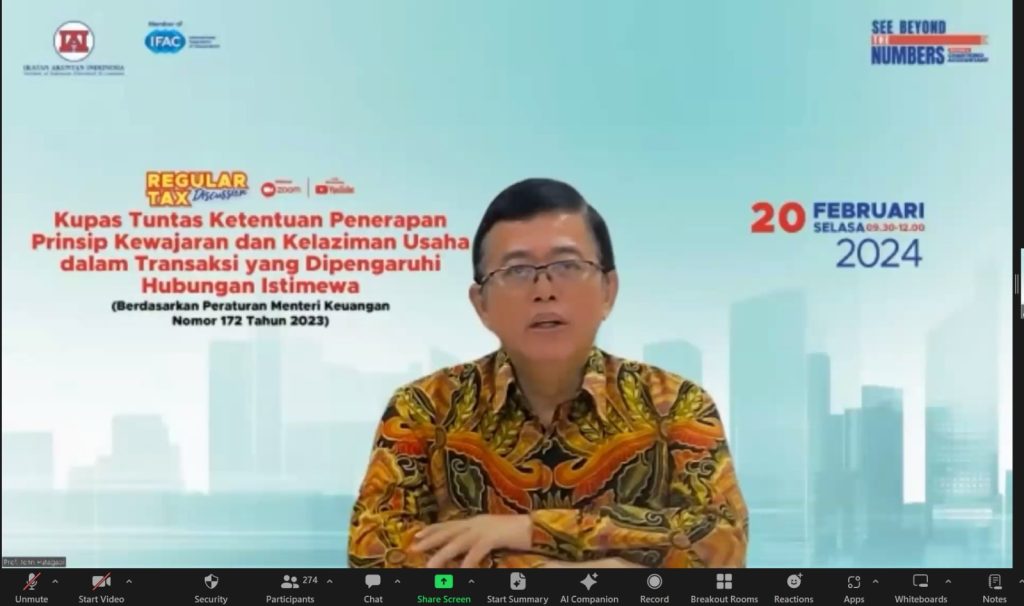
Ismuhadi’s Equation: A Novel Forensic Accounting Tool for Enhanced Tax Enforcement in Indonesia
- Hukum
Wednesday, 14 May 2025 00:26 WIB

Jakarta, fiskusnews.com:
1. Introduction: The Landscape of Tax Evasion in Indonesia and the Emergence of Ismuhadi’s Equation
Indonesia confronts a persistent struggle in achieving robust tax compliance, a challenge that significantly impacts the nation’s fiscal well-being and impedes its economic progress. The country’s tax-to-GDP ratio, which hovers around 10%, stands notably low when juxtaposed with the regional average, approximately half of which is collected by neighboring nations. This disparity underscores a pressing demand for innovative strategies aimed at bolstering revenue mobilization. Empirical evidence suggests that the estimated rate of tax evasion among formal firms in Indonesia is approximately 25%, culminating in substantial revenue losses equivalent to about 2% of the nation’s Gross Domestic Product. Furthermore, a considerable segment of Indonesia’s economic activity operates within the informal sector, estimated to constitute between 21.76% and 30-40% of the GDP. This underground economy encompasses a wide array of untaxed and often illicit activities. The confluence of a subdued tax-to-GDP ratio, elevated evasion rates, and a substantial informal sector underscores a critical imperative for enhanced tax enforcement mechanisms within Indonesia. This situation suggests that conventional methodologies might be falling short, thereby creating an opportune space for the adoption of novel approaches such as Ismuhadi’s Equation. Statistical data points to a systemic issue where the gap between potential and actual tax revenue remains considerable, indicating that existing strategies are not entirely successful in capturing all economic activity within the tax net. This unmet need generates a demand for new tools capable of addressing these specific challenges.
In response to the recognized limitations of traditional accounting frameworks in effectively detecting the nuanced strategies employed in tax avoidance and the concealment of economic activities prevalent in Indonesia, Dr. Joko Ismuhadi Soewarsono, a distinguished Indonesian tax expert, developed Ismuhadi’s Equation, also known as the Tax Accounting Equation (TAE). This innovative tool is specifically designed as a forensic accounting instrument aimed at the early detection of potential tax avoidance and/or embezzlement through the application of an accounting mathematical equation approach. Ismuhadi’s Equation represents an adaptation of the fundamental accounting equation, meticulously tailored to address the specific challenges of tax evasion and the concealment of economic activities within the Indonesian context. The development of this equation signifies an attempt to create a more targeted and mathematically rigorous tool for tax authorities. The research highlights that the motivation behind TAE’s creation stems from the inadequacy of standard accounting practices in uncovering tax fraud. By modifying the fundamental equation, Dr. Ismuhadi endeavors to focus on revenue relationships that are frequently manipulated in tax evasion schemes.
| Metric | Value/Percentage | Source |
|---|---|---|
| Estimated tax evasion rate among formal firms | ~25% | World Bank, VoxDev |
| Estimated revenue loss due to tax evasion by formal firms | ~2% of GDP | VoxDev |
| Indonesia’s tax-to-GDP ratio | Just over 10% | World Bank, Devpolicy, UKnowledge |
| Estimated annual tax lost to tax havens | ~$2.8 billion | Tax Justice Network |
| Estimated size of the shadow/underground economy (2015) | 21.76% of GDP | World Bank via The Jakarta Post |
| Estimated size of the shadow/underground economy (2020 est.) | 30-40% of GDP | World Bank via The Jakarta Post |
2. Understanding the Tax Accounting Equation (TAE): A Forensic Perspective
The cornerstone of modern accounting is the fundamental accounting equation: Assets = Liabilities + Owner’s Equity. This equation provides a static representation of a company’s financial standing at a specific point in time. However, while this foundational equation is indispensable for general financial reporting, its static nature and broad scope may not always be sufficiently sensitive to detect the intricate strategies often employed in tax avoidance and the concealment of economic activities. The manipulations frequently associated with tax evasion, particularly those involving the misreporting of revenue and expenses, necessitate a more focused and dynamic approach for forensic tax analysis. Standard accounting practices, while crucial for presenting a snapshot of a company’s financial health, do not inherently highlight inconsistencies over time or unusual correlations between income statement and balance sheet items that could serve as indicators of tax fraud.
To address these limitations, Dr. Ismuhadi formulated the Tax Accounting Equation (TAE), which exists in two primary forms, each offering a distinct perspective for tax analysis. The first formulation is: Revenue – Expenses = Assets – Liabilities. This form places emphasis on the relationship between a company’s profitability, as reflected in its income statement (Revenue – Expenses), and its net worth, as presented on its balance sheet (Assets – Liabilities). By examining this relationship, tax authorities can identify potential imbalances that might suggest underreported revenue or overstated expenses. The second formulation of Ismuhadi’s Equation is: Revenue = Expenses + Assets – Liabilities. This form highlights whether a company’s revenue is sufficient to cover its operating expenses and contribute to its overall net asset value. It also suggests an inverse relationship between revenue and liabilities, where an increase in revenue should ideally lead to a decrease in liabilities, for example, through the repayment of debt. These two forms of the equation are not merely algebraic manipulations of the basic accounting equation; rather, they represent a deliberate rearrangement with revenue positioned at the forefront, recognizing it as a critical indicator of a company’s economic activity and, consequently, its tax obligations. The two forms of Ismuhadi’s Equation provide distinct yet complementary perspectives for tax analysis. The first form concentrates on the alignment between a company’s profitability and its net worth, while the second scrutinizes the adequacy of its revenue in relation to its expenses and liabilities. This dual approach enables a more thorough detection of potential irregularities that might indicate tax evasion. By rearranging the fundamental accounting equation to specifically focus on revenue and its interplay with other financial components, Dr. Ismuhadi provides tax authorities with concrete mathematical relationships to evaluate. Significant deviations from these anticipated relationships can then serve as crucial indicators warranting further investigation.
| Equation Name | Formula | Primary Focus |
|---|---|---|
| Pacioli’s Fundamental Accounting Equation | Assets = Liabilities + Equity | Financial position at a point in time |
| Ismuhadi’s Equation – Form 1 | Revenue – Expenses = Assets – Liabilities | Relationship between profitability (Income Statement) and net worth (Balance Sheet) for tax analysis |
| Ismuhadi’s Equation – Form 2 | Revenue = Expenses + Assets – Liabilities | Sufficiency of revenue to cover costs and contribute to net assets for tax analysis; Inverse relationship between Revenue and Liabilities |
3. Mechanism of Detection: How Ismuhadi’s Equation Uncovers Financial Irregularities
The fundamental logic underpinning Ismuhadi’s Equation rests on the premise that a company’s reported revenue should logically correspond with its assets, liabilities, and expenses. By meticulously analyzing these inherent relationships within a company’s financial statements, the equation is designed to uncover inconsistencies in financial reporting that may serve as red flags for potential tax evasion or other financial irregularities. Tax evasion often involves the deliberate distortion of these fundamental financial relationships, and Ismuhadi’s Equation is specifically crafted to mathematically expose such manipulations. If a company’s financial statements accurately reflect its underlying economic activities, the various components should align in accordance with the principles embedded within TAE. Conversely, intentional misreporting aimed at evading tax obligations will likely disrupt this expected equilibrium.
One key area of focus for Ismuhadi’s Equation is the identification of indicators that might suggest underreported revenue. For instance, if a company exhibits increasing assets or decreasing liabilities without a corresponding increase in its reported revenue, this could be a strong indication of hidden income that has not been declared for tax purposes. Similarly, unusually low reported revenue in comparison to the company’s stated expenses and overall net assets could raise suspicions of income underreporting. A core objective of TAE is to detect situations where a company’s balance sheet demonstrates growth or stability that is not adequately supported by its reported income, thereby hinting at the existence of undeclared revenue streams. Underreporting revenue is a prevalent tactic employed to evade tax obligations. If a company is accumulating assets or reducing its debt burden without a clear and verifiable source of income, it strongly suggests that revenue might be intentionally concealed from the scrutiny of tax authorities.
Ismuhadi’s Equation can also play a crucial role in identifying indicators of inflated expenses. Discrepancies revealed through the application of the equation might point towards overstated expenses, a common strategy used to artificially reduce a company’s taxable income. TAE can potentially flag instances where a company inflates its expenses to lower its reported profit and, consequently, its tax liability. By examining the balance between a company’s profitability, as reflected in its income statement, and its net worth, as shown on its balance sheet, TAE can potentially highlight unusual spikes in expenses that are not logically reflected in corresponding changes in the company’s assets or liabilities.
Furthermore, Ismuhadi’s Equation is designed to identify liability discrepancies that could signal potential tax evasion. An unusually high level of liabilities in relation to a company’s revenue growth might indicate a scenario where income is being disguised as debt to avoid tax obligations. Moreover, a high level of liabilities to related parties could serve as a red flag for transfer pricing manipulation, a common and sophisticated tactic employed for tax evasion. Dr. Ismuhadi suggests that taxpayers might intentionally misclassify income as liabilities, thereby distorting the expected balance within the equation and obscuring their true financial performance. By focusing on the anticipated inverse relationship between revenue and liabilities, TAE can highlight scenarios where an increase in revenue does not lead to a corresponding and logical decrease in debt, suggesting that the reported revenue might be intentionally misclassified to evade taxation.
Perhaps one of the most significant strengths of Ismuhadi’s Equation lies in its potential to detect hidden economic activity and its connection to the often elusive underground economy. The equation can assist in identifying situations where a company’s reported revenue appears insufficient to support its reported expenses and asset growth, potentially indicating the presence of unreported income derived from the shadow economy. TAE provides a tool to identify potential discrepancies that might specifically point towards the existence of hidden economic activity that contributes to the overall underground economy. If a company’s financial activities, as evidenced by its expenses and the growth of its assets, appear to significantly exceed the revenue it has officially reported, it strongly suggests the presence of unreported income, a defining characteristic of the shadow economy.
4. Application of Ismuhadi’s Equation in Practice:
Ismuhadi’s Equation serves as a valuable forensic accounting tool for Indonesian tax authorities, particularly the Directorate General of Taxes (DJP). Its primary application lies in its capacity as a screening tool used during tax audits and investigations to identify companies exhibiting potentially suspicious financial patterns that warrant a more in-depth examination. By analyzing the mathematical relationships defined by the equation, tax officials can quantitatively assess the financial statements submitted by companies and flag any anomalies that deviate significantly from expected financial norms. This capability allows tax authorities to more effectively target their audit efforts, directing resources towards entities where the risk of tax evasion appears to be higher, thereby enhancing the overall efficiency of the audit process.
Beyond its role in tax audits, Ismuhadi’s Equation provides a robust framework for the early detection of potential tax avoidance schemes and instances of financial manipulation. By mathematically linking a company’s revenue, expenses, assets, and liabilities, the equation offers a structured approach to identifying potential tax evasion tactics at an early stage. For example, the equation can be instrumental in spotting instances where revenues might be deliberately understated or expenses are overstated, as such manipulations would likely result in an imbalance within the TAE when compared to the asset and liability sides of the financial statements. Furthermore, TAE is particularly relevant in analyzing transactions that occur within group companies, especially those that are integrated from upstream to downstream operations. The complex financial engineering activities often employed within such corporate groups, which can be designed to shift profits or inflate costs to minimize overall tax liability, can be more readily uncovered by applying TAE to the consolidated or individual financial statements of these related entities. The equation can also flag unusual inverse relationships between a company’s revenue and its liabilities, which might indicate attempts to disguise taxable income as non-taxable debt.
Moreover, Ismuhadi’s Equation serves as a valuable tool in retrospective forensic accounting analysis. It can be applied to scrutinize historical financial data to uncover evidence of past tax evasion or financial manipulation that might not have been apparent at the time of reporting. This capability is particularly useful in cases where tax authorities or forensic accountants are reviewing prior periods to identify potential irregularities or fraudulent activities.
5. The Indonesian Context: Tailoring a Tool for a Unique Economic Environment
Ismuhadi’s Equation is not a universally applicable formula; rather, it is specifically designed and most relevant for the unique financial and regulatory landscape of Indonesia. Dr. Ismuhadi developed this novel approach with the specific aim of addressing the persistent challenges of tax evasion that are particularly pronounced within the Indonesian context. The equation’s framework and the underlying assumptions are likely informed by the specific nuances of Indonesian tax law, business practices, and the prevalent methods of tax evasion observed within the nation. This tailoring to the Indonesian environment suggests that Ismuhadi’s Equation may offer a more effective tool for detecting tax irregularities compared to generic forensic accounting methods that might not fully account for the specific economic and regulatory realities of Indonesia.
A significant consideration in the design and applicability of Ismuhadi’s Equation is its relevance to Indonesia’s substantial informal sector. The equation’s focus on the relationship between revenue and other critical financial elements makes it particularly pertinent for analyzing financial data in a context where income underreporting is a common characteristic of the informal economy. Furthermore, the equation’s utility extends to analyzing transactions within group companies, especially those exhibiting vertical integration from upstream to downstream operations. These types of integrated structures are common in Indonesia and can be used to obscure the true financial picture through complex inter-company transactions. Ismuhadi’s Equation offers a means to potentially uncover hidden transactions and expose financial manipulation that might be more challenging to detect using traditional audit methods.
While the fundamental principles underpinning Ismuhadi’s Equation, which are rooted in core accounting logic, might be adaptable for use in other countries facing similar challenges in tax evasion, its direct application is primarily focused on Indonesia. The specific thresholds, industry benchmarks, and regulatory context that may be implicitly embedded within the equation are likely tailored to the Indonesian economic and legal framework. Therefore, while the core logic of TAE could potentially be valuable in other jurisdictions grappling with comparable tax evasion issues, adapting it for effective use elsewhere would necessitate careful consideration and likely require specific modifications to account for the unique accounting standards, tax laws, and economic structures of those countries.
6. Practical Implementation and Technological Integration of TAE:
In practical application, Ismuhadi’s Equation is implemented by tax authorities or forensic accountants through a systematic process of analyzing a company’s financial statements. This involves inputting the key financial data points – specifically the company’s reported revenue, expenses, assets, and liabilities – into the chosen form of the equation. The core of TAE’s analytical power is then realized by comparing the calculated relationships between these fundamental financial elements with the corresponding figures that the company has officially reported. Any significant deviations or unusual patterns that emerge from this comparison can serve as immediate signals of potential financial irregularities or possible tax evasion. The magnitude and nature of these discrepancies are crucial in assessing the likelihood and the specific type of financial misconduct that might be occurring. While minor deviations could arise from normal business fluctuations or unintentional errors in reporting, substantial or consistently occurring discrepancies are more likely to be indicative of intentional misreporting aimed at evading tax obligations.
When companies exhibit significant deviations from the expected financial relationships as defined by Ismuhadi’s Equation, they become prime candidates for more in-depth audits and further investigations. This allows tax authorities to strategically focus their detailed examination efforts on the cases that appear most suspicious, thereby enabling a more efficient allocation of their often limited audit resources. By effectively flagging these high-risk companies, TAE increases the probability of uncovering actual instances of tax evasion and other financial crimes.
Looking towards the future, there is considerable discussion and potential for integrating Ismuhadi’s Equation with advanced technologies such as Artificial Neural Networks (ANNs) and other forms of Artificial Intelligence (AI). This integration would allow for the efficient analysis of large and complex datasets, significantly enhancing the ability to identify anomalies and patterns of potential tax evasion that might be too subtle or voluminous for manual detection. Machine learning algorithms, a subset of AI, could be specifically trained to recognize the signs and characteristics of fraudulent financial reporting based on historical data and known cases of tax evasion. Furthermore, AI’s inherent capability to process and analyze vast amounts of data could enable real-time monitoring of financial transactions, providing an even more proactive approach to detecting and preventing tax fraud before it results in significant financial losses. The synergy between Ismuhadi’s Equation and these advanced technologies holds substantial promise for revolutionizing the efficiency and effectiveness of forensic tax analysis in Indonesia.
7. Ismuhadi’s Equation: A Comparative Analysis with Traditional Forensic Accounting Methods
Forensic accounting employs a range of traditional techniques to detect financial irregularities and fraud. These methods include financial tracing, a process that meticulously follows the movement of funds through various accounts and transactions to identify their sources and uses. The net worth method involves analyzing changes in an individual’s or entity’s assets and liabilities over a specific period to infer potential unreported income or hidden wealth. Cash expenditure analysis examines spending patterns to identify discrepancies between reported income and actual expenditures, which can also indicate unreported income. Another technique, Benford’s Law analysis, examines the frequency distribution of the first digit in numerical data to identify potential manipulation or fabrication of financial information. Financial ratio analysis involves comparing various financial ratios, such as profitability and liquidity ratios, against industry benchmarks or historical trends to identify unusual deviations that might suggest fraudulent activity. Furthermore, forensic accountants often rely on interviews and interrogations to gather crucial information from individuals involved or knowledgeable about the financial activities under scrutiny. In the digital age, digital forensic accounting has become increasingly important, involving the tracking and analysis of financial activities in the digital realm, including electronic records and online transactions.
Ismuhadi’s Equation distinguishes itself from these traditional methods by providing a mathematically derived equation that directly examines the interplay between a company’s revenue and its balance sheet components. Unlike many traditional techniques that focus on detailed analysis of specific accounts or the tracing of individual transaction flows, TAE offers a more holistic, equation-based approach. It places a specific emphasis on the fundamental relationships between key financial statement elements, with revenue being a central focus. This approach directly addresses the issue of underreported income by focusing on the logical alignment that should exist between a company’s reported revenue and its other financial indicators.
However, Ismuhadi’s Equation is not intended to be a replacement for these traditional forensic accounting methods. Instead, it can be used effectively in conjunction with them, providing an additional layer of analysis and a more targeted approach to initially identifying potential instances of tax evasion. For example, TAE can serve as a high-level screening mechanism based on core accounting principles, flagging companies that exhibit unusual financial relationships. These flagged anomalies can then be subjected to more detailed investigation using traditional techniques such as financial tracing to follow the flow of funds or the net worth method to analyze changes in asset and liability balances. A comprehensive and multi-faceted approach, which strategically combines the broad analytical power of TAE with the in-depth investigative capabilities of traditional forensic accounting methods, is likely to be the most effective strategy for combating tax fraud in Indonesia.
8. Discussion and Impact: Public and Academic Reception of Ismuhadi’s Equation
Ismuhadi’s Equation, or the Tax Accounting Equation (TAE), has garnered notable public attention and has stimulated discussions, particularly on online platforms such as YouTube, indicating a growing awareness of its potential in the realm of tax analysis. In these public forums, TAE is often presented as a valuable early warning system, capable of detecting potential tax avoidance schemes before they escalate into more significant issues. Dr. Ismuhadi’s work is frequently highlighted as a crucial advancement in addressing the persistent problem of tax evasion in Indonesia, offering tax authorities a novel and potentially effective tool to identify and ultimately deter tax offenders. A key theme emerging from these public discussions is the recognition of TAE’s capability for forensic analysis, its potential to uncover hidden financial transactions, and its ability to expose sophisticated methods of financial manipulation used for tax evasion.
Within academic circles, Dr. Ismuhadi Soewarsono is recognized as an active member of prominent Indonesian professional organizations focused on taxation and law, including the Association of Tax Centers and Tax Academics of All Indonesia (Pertapsi) and the Association of Indonesian Legal Experts (Perkahi). His research concerning TAE introduces an innovative mathematical model specifically designed for the analysis of financial statements from a tax perspective, thereby making a significant contribution to the ongoing academic discourse in the field. This novel approach holds the potential to stimulate further academic inquiry and discussion, particularly in the specialized areas of forensic tax accounting and the application of quantitative methodologies in tax analysis. Moreover, Dr. Ismuhadi’s work could serve as inspiration for future research endeavors exploring various aspects of tax evasion, such as the underlying behavioral factors and the potential for leveraging technology to enhance tax compliance.
Given Dr. Ismuhadi’s professional background as a tax auditor and supervisor within the Directorate General of Taxes (DGT) in Jakarta, his research on the Tax Accounting Equation holds significant potential for influencing tax policy innovation and administrative practices within Indonesia. His direct experience with the practical challenges of tax administration provides a valuable real-world context for his academic work, which could make his proposed solutions particularly relevant and readily implementable within the existing framework of the DGT. The development and potential adoption of TAE align well with Indonesia’s broader national objectives of improving overall tax compliance rates and increasing the collection of state revenue. By offering a more targeted and mathematically rigorous framework for the early detection of potential tax evasion, TAE could contribute to a more efficient allocation of the DGT’s audit resources, ultimately leading to an increase in tax revenue for the government. Furthermore, by promoting greater financial transparency and accountability among taxpayers, the implementation of TAE has the potential to contribute to a fairer and more equitable tax system throughout Indonesia.
9. Potential Limitations and Areas for Further Research
The provided research material primarily focuses on introducing and explaining Ismuhadi’s Equation, with limited explicit criticism of the approach. However, the absence of readily apparent critique within these initial sources does not necessarily imply that TAE is without limitations or potential drawbacks. A comprehensive and balanced evaluation of Ismuhadi’s Equation would necessitate a broader exploration of academic and professional discussions that might offer critical perspectives or identify potential weaknesses not captured in the current research snippets.
Further academic research and rigorous empirical testing are essential to thoroughly validate the effectiveness and broad applicability of Ismuhadi’s Equation across a diverse range of industries and within varying economic environments, particularly within the Indonesian context. While the theoretical framework of TAE appears to be grounded in sound accounting principles, its real-world efficacy in consistently and accurately detecting tax evasion needs to be substantiated through the analysis of empirical data obtained from various sectors of the Indonesian economy and across different economic cycles. Such testing would help to quantify the equation’s detection rate, identify any potential industry-specific nuances that might affect its performance, and ultimately establish its reliability as a forensic accounting tool.
The practical effectiveness of Ismuhadi’s Equation is inherently linked to the accuracy and completeness of the financial statement data to which it is applied. If companies are intentionally engaged in misreporting their financial information as a means of tax evasion, it is conceivable that sophisticated actors might manipulate their financial data in a way that still maintains a semblance of balance according to the equation, thereby potentially limiting its ability to detect the underlying fraudulent activity. Therefore, the reliability of TAE’s results is directly dependent on the integrity and availability of the financial data used in its application.
As Ismuhadi’s Equation gains wider recognition and potential adoption by tax authorities, there is a possibility that individuals and entities seeking to evade taxes will become aware of this specific detection tool and adapt their methods to avoid being flagged by its analysis. Tax evasion is an inherently dynamic and adaptive practice, and as new detection mechanisms emerge, so too do new strategies for circumventing them. The long-term effectiveness of TAE will likely depend on its ability to remain ahead of evolving tax evasion tactics and potentially incorporate adaptive elements that can identify new patterns of manipulation.
Several potential avenues for future research could further enhance the utility and impact of Ismuhadi’s Equation. One area involves the development of specific metrics or industry-based benchmarks that could be used in conjunction with the equation to increase its sensitivity and accuracy in identifying irregularities within different sectors of the Indonesian economy. Further research could also explore the behavioral aspects of tax evasion in relation to the signals generated by TAE, potentially providing insights into the psychological and strategic considerations of tax evaders. Investigating the optimal integration of TAE with other established forensic accounting techniques and emerging technologies, such as artificial intelligence and machine learning, could also yield significant advancements in tax fraud detection. Analyzing the actual impact of TAE implementation on tax compliance rates within Indonesia over time would provide valuable data on its effectiveness as a deterrent and a detection tool. Finally, exploring the potential for adapting the core principles of TAE for use in other countries that face similar challenges in combating tax evasion could broaden its overall impact in the global fight against financial crime.
10. Conclusion and Recommendations for Enhanced Tax Enforcement in Indonesia
In conclusion, Ismuhadi’s Equation represents a novel and promising forensic accounting tool that is specifically tailored to the unique challenges of tax enforcement within the Indonesian economic context. This innovative approach offers a mathematically grounded method for detecting potential tax evasion by focusing on the fundamental relationships between a company’s revenue, expenses, assets, and liabilities as reported in their financial statements. The equation has garnered both public and academic interest within Indonesia, indicating its potential to contribute significantly to the modernization of tax analysis and the ongoing efforts to combat tax non-compliance.
To fully leverage the potential of Ismuhadi’s Equation and enhance tax enforcement in Indonesia, the following recommendations are proposed:
- Further Empirical Validation: Comprehensive empirical studies should be conducted across various sectors of the Indonesian economy to rigorously test the effectiveness of Ismuhadi’s Equation in detecting tax evasion. These studies should aim to quantify its detection rate and identify any industry-specific nuances that might influence its application.
- Integration into DJP Practices: The Directorate General of Taxes (DJP) should actively explore the integration of Ismuhadi’s Equation into its existing tax audit and investigation processes. Implementing pilot programs within different tax offices could provide valuable insights into its practical utility, its impact on the efficiency of audits, and its contribution to overall tax revenue.
- Technological Implementation: Strategic investments should be made in the development and deployment of technological solutions that automate the application of Ismuhadi’s Equation to large volumes of financial data. This could involve creating specialized software or integrating the equation’s logic into existing accounting software used by tax authorities. Furthermore, exploring the integration of TAE with artificial intelligence and machine learning technologies could significantly enhance its predictive capabilities and its ability to identify complex patterns of tax evasion.
- Training and Capacity Building: The DJP should implement targeted training programs to educate tax auditors and forensic accountants on the core principles, the practical application, and the interpretation of the results derived from Ismuhadi’s Equation. Ensuring that tax professionals possess the necessary skills to effectively utilize this tool is crucial for its successful adoption.
- Refinement and Adaptation: The effectiveness of Ismuhadi’s Equation should be continuously monitored, and the equation itself should be refined and adapted based on the findings of empirical research and the evolving strategies employed by those seeking to evade taxes. Fostering ongoing collaboration between academics and tax practitioners can facilitate this process of continuous improvement.
- Public Awareness and Transparency: Efforts should be made to promote public awareness regarding the role of Ismuhadi’s Equation in the fight against tax evasion. This increased transparency could potentially deter tax non-compliance and encourage more accurate financial reporting.
- Comparative Studies: Conducting comparative studies that directly evaluate the performance of Ismuhadi’s Equation against traditional forensic accounting methods in the Indonesian context would provide a clearer understanding of its specific advantages and limitations, helping to define its optimal role in a comprehensive tax enforcement strategy.
- Legislative Support: Consideration should be given to formally recognizing and supporting the application of Ismuhadi’s Equation within Indonesia’s tax regulations or guidelines. This legislative support could provide a more robust framework for its use in tax enforcement activities.
Reporter: Marshanda Gita – Pertapsi Muda
Share
Berita Lainnya
REK, IKI WAKTUNE MBALEKNO SENG MBIEEN! PRODIP PAJAK 88 NGAJAK GAWE GEGER SUROBOYO!
Mengungkap Aktivitas Ekonomi Bawah Tanah: Analisis Persamaan Akuntansi Pajak Dr. Joko Ismuhadi
WEBINAR EKSKLUSIF: ASPEK PERPAJAKAN DALAM PERALIHAN SAHAM & ASET TIDAK BERGERAK
LOKAKARYA DARING PAJAK MINIMUM GLOBAL: KONSEP, REGULASI, DAN SIMULASI
Punya Prospek yang Baik, Pemprov Kaltim Pacu Produksi Pisang untuk Pasar Internasional
Non-Conviction Based Asset Forfeiture: A Potential Mechanism for Enhancing Tax Revenue and Deterring Tax Crimes
Rekomendasi untuk Anda

Berita Terbaru
Eksplor lebih dalam berita dan program khas fiskusnews.com
Tag Terpopuler
# #TAE
# #TAX ACCOUNTING EQUATION
# #TAX FRAUD
# #TAX EVASION




